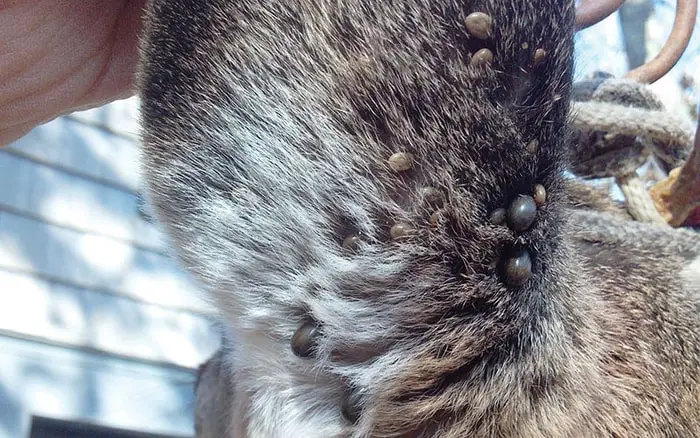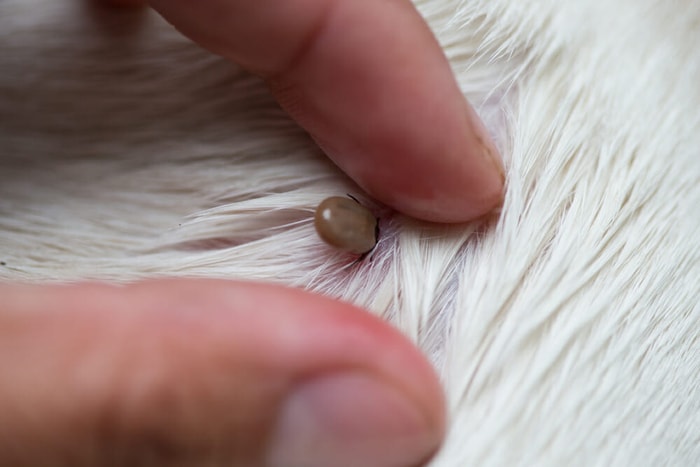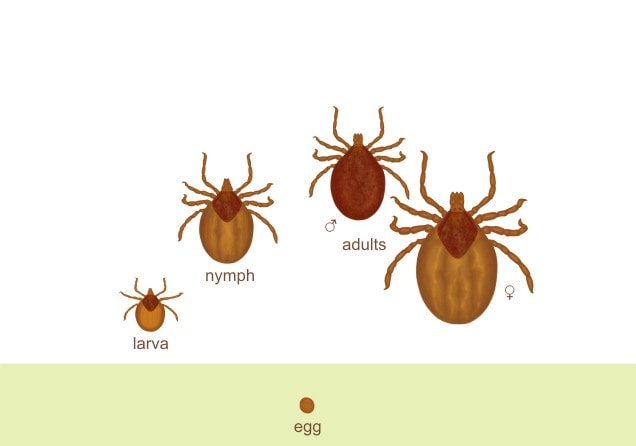Lime borreliosis in cats or Lyme disease is an uncommon bacterial disease of all domestic animals and humans. The owner of the cats needs not to concern about the disease, but it may transfer from cats to humans. The causative bacteria of Lyme disease is transmitted by Ixodes ticks called black-legged ticks or deer ticks. The disease causes inflammation of joints, lameness, loss of appetite, and cat death due to weakness.
Causes of Lyme Disease in Cats
The Lyme borreliosis in cats is caused by the spiral-shaped bacteria Borrelia burdogferri. The bacteria are transmitted by biting young ticks (nymphs) of female ticks to a susceptible host. The ticks are attached to the body and take 1-2 days to suck blood and transmit the bacteria. The risk of transmission increases during the nymph period and when the ticks are more eager to suck blood, especially during spring. The owner and other animals are also vulnerable to the disease.

Clinical Signs of Lyme Borreliosis in Cats
The disease is more widespread in dogs than cats. Lyme disease goes unnoticed in most cases in cats. The prominent clinical signs are inflammation of joints and lameness of one leg. The lameness is also called shifting lameness. The lameness may remain for a few days, and in acute cases, the lameness may reduce within 2-3 days. The other clinical signs are:
- Kidney problems may lead to glomerulonephritis.
- Stiffness in walking.
- Arched back.
- Fever.
- Loss of appetite.
- Swollen lymph nodes close to tick bites.
- Cardiac problems.
- Diarrhea.
- Vomiting.
- Loss of body weight.

Diagnosis of Lyme Disease in Cats
The disease is merely seen in cats and confused with many other diseases. The ideal procedure of diagnosis of disease are:
- History of exposure to ticks.
- Specific clinical signs.
- Isolation and identification of causative bacteria from lesions.
- Examination of joint fluids.
- Radiographic examination of joints of cats.
- Ultrasonography of abdomen to see the condition of kidney.

Treatment Borreliosis in Cats
The usual treatment of the disease in cats by the following ways:
- Broad-spectrum antibiotics.
- NSAIDs to reduce inflammation and joint pains.
- Medication is required in the presence of diarrhea and vomiting.
- Vitamin A and C improved the healing of joint pain and arthritis.

Prevention of Borreliosis in cats
The following measures can prevent the disease:
- Control of tick population in cat’s environment.
- Limit the exposure of house cats with street dogs and cats.
- Early diagnosis and treatment of the disease.
Concluding Remarks on Topics
Lyme borreliosis in cats is a rare but effective disease. The disease is commonly manifested by joint pains, arthritis, and kidney problems. The disease is more common in dogs, cattle, horses, and humans. The disease is transmitted by the bite of juvenile ticks and female ticks. I think this article will help you recognize and prevent the disease in your lovely cats.